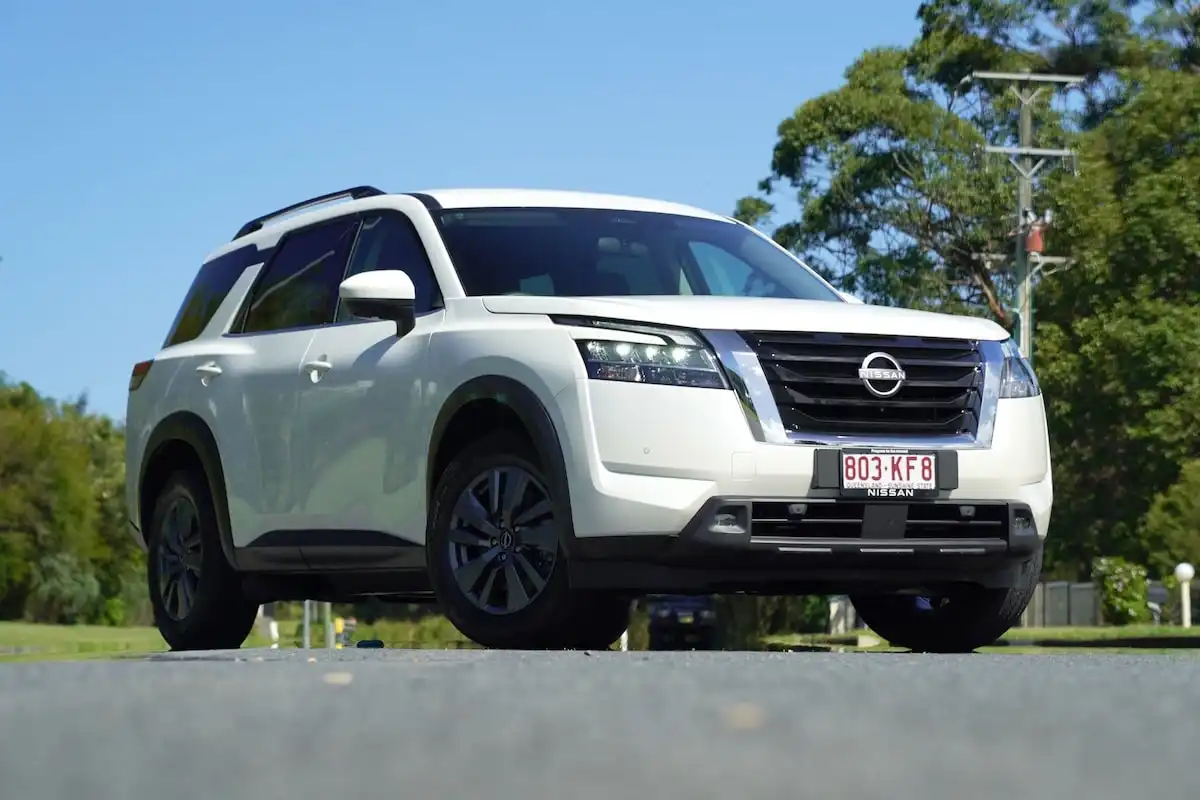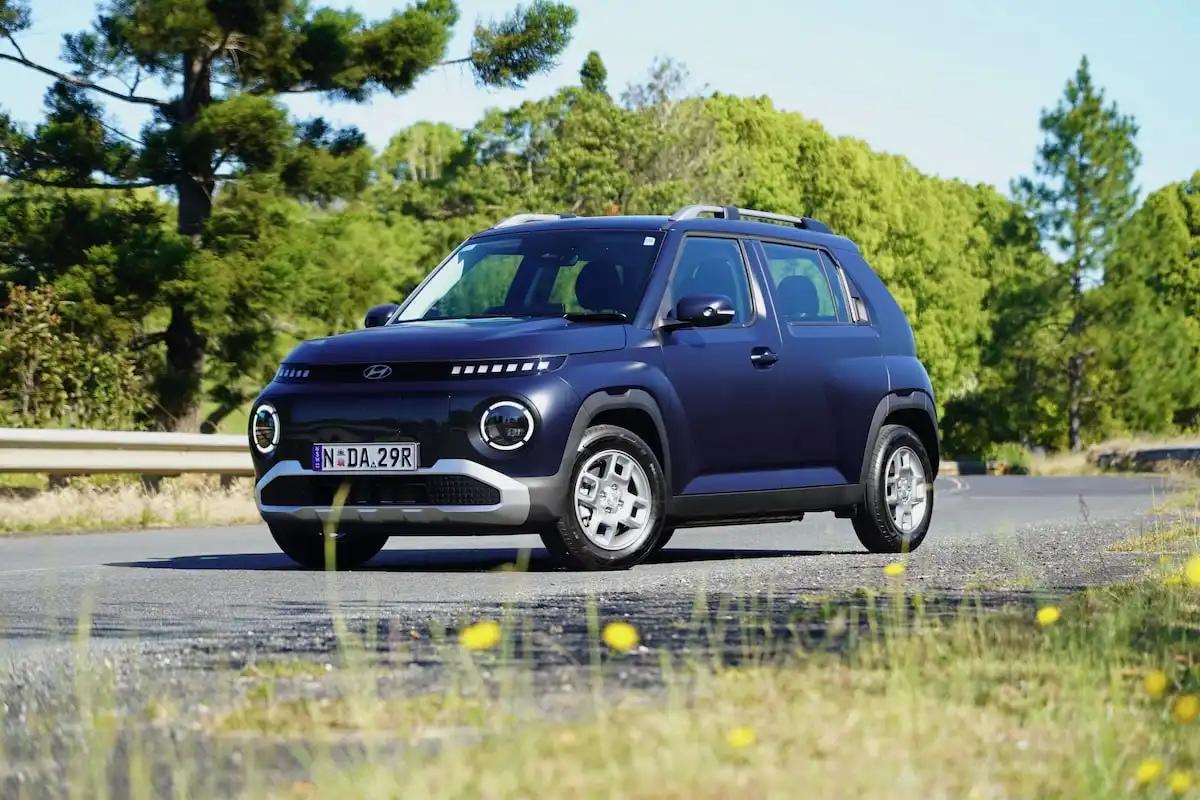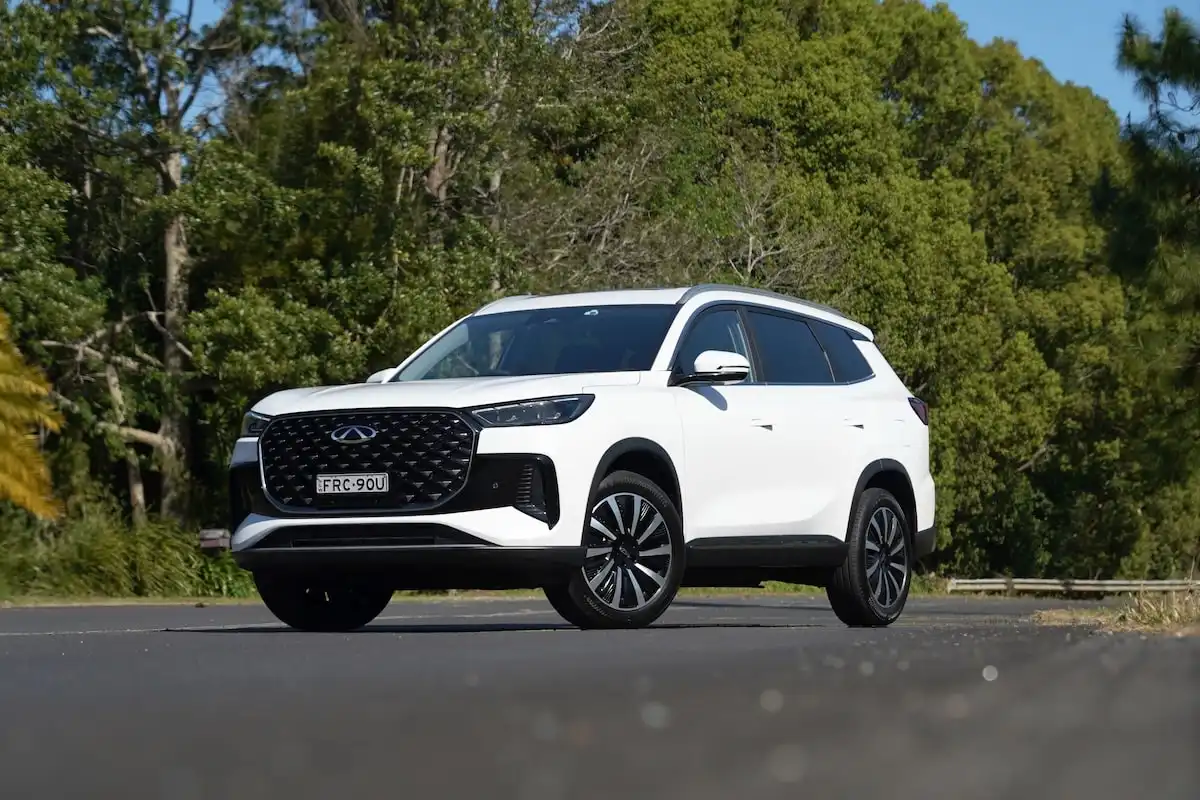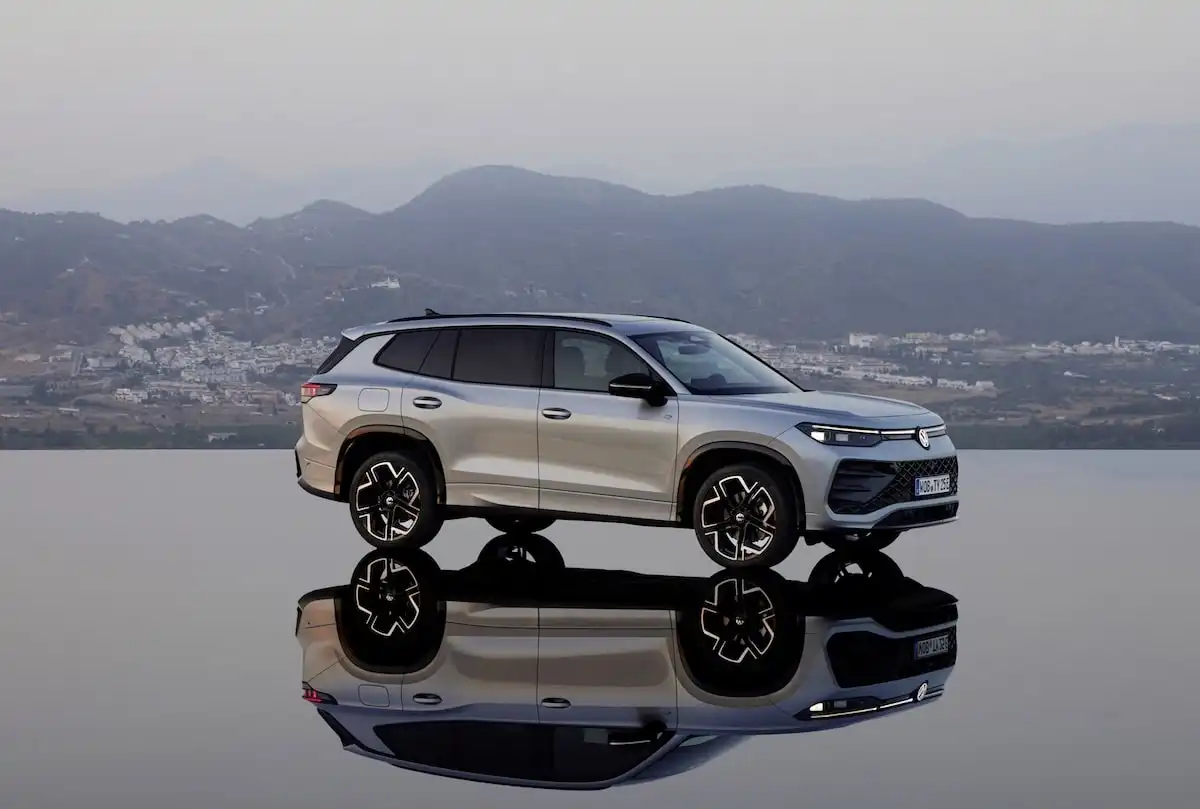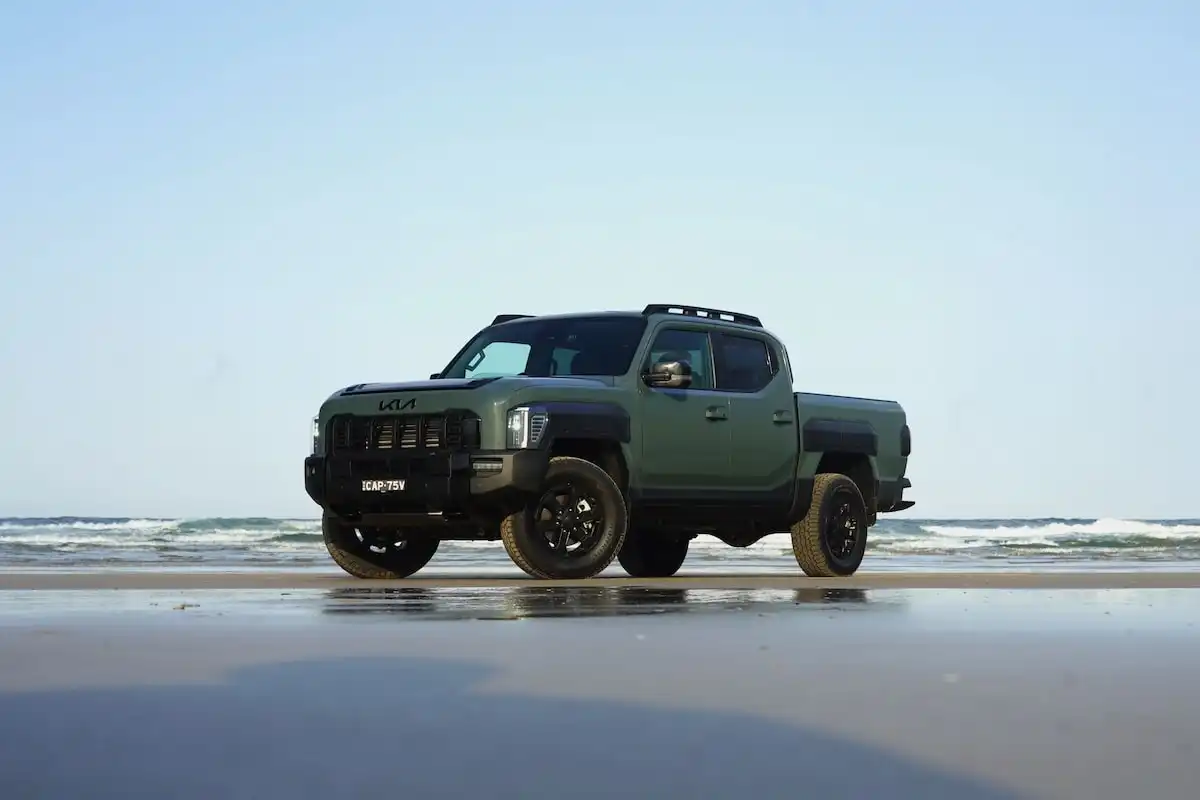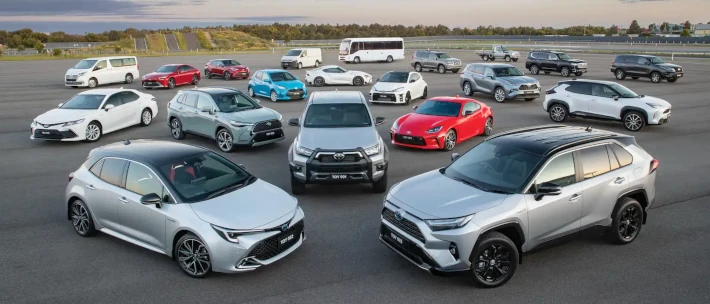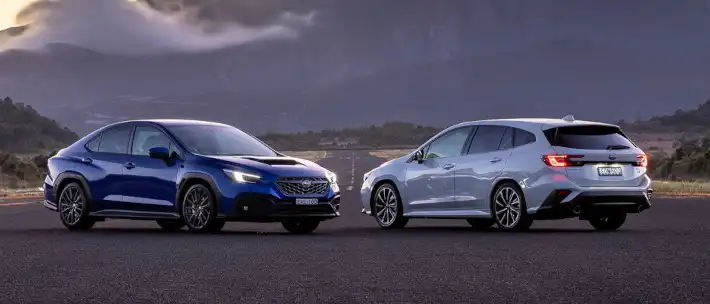After a noticeable absence, Nissan has once again added a more accessible version of the Pathfinder, the ST-L grade.
Nissan was forced to cut production of the ST-L which significantly weakened the Pathfinder’s value proposition, a problem compounded by the fact there’s some serious competition in the world of family-friendly, three-row SUVs with a somewhat adventurous nature.
For 2025, though, buyers now have the option of the entry-level ST-L grade in both front-wheel drive and all-wheel drive layouts, accompanied by a substantial price drop over the Ti.
Just how well does the Pathfinder ST-L AWD hold up under the family test, then and how does it stand against its rockstar rivals in the large SUV segment? We got behind the wheel to find out.
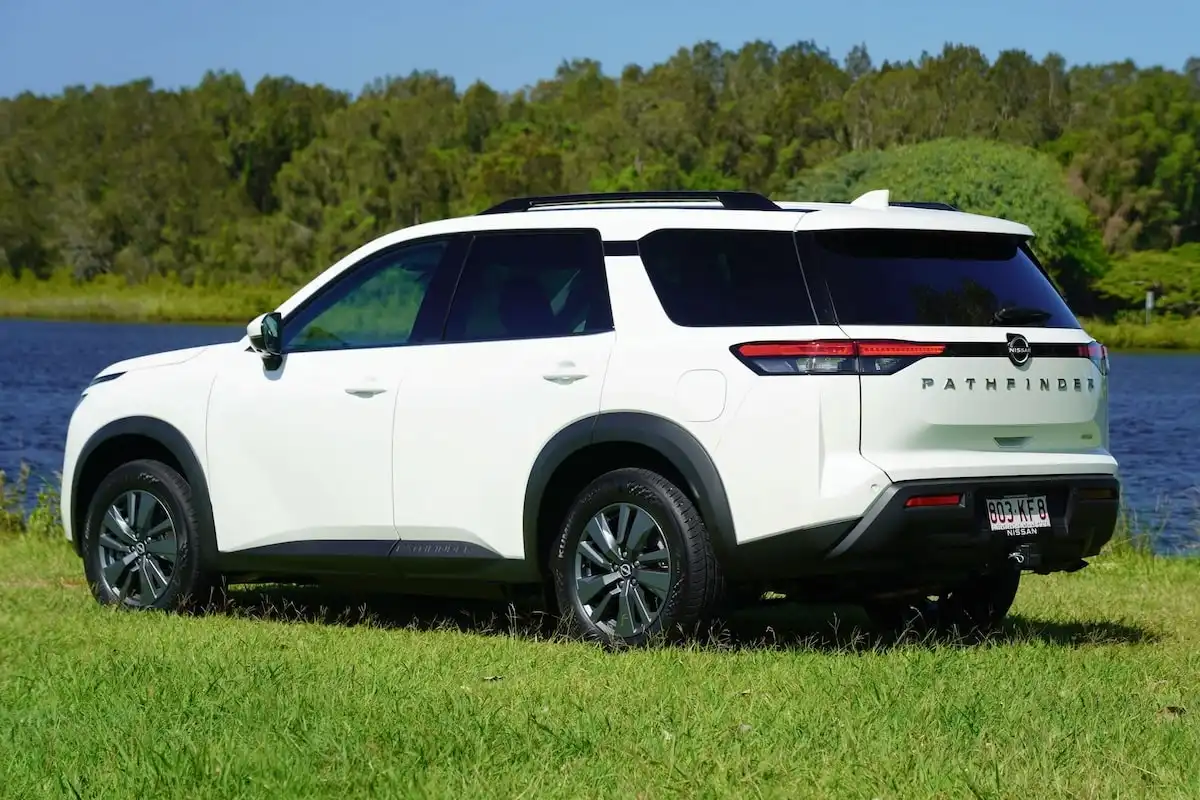
Nissan Pathfinder Competition
Nissan Pathfinder |
VS |
Hyundai Santa Fe |
| Kia Sorento | ||
| Hyundai Palisade | ||
| Mazda CX-80 | ||
| Toyota Kluger | ||
| Kia Carnival | ||
| Chery Tiggo 8 Pro Max | ||
| Ford Everest | ||
| Isuzu MU-X |
How Much Does the Nissan Pathfinder ST-L Cost?
Prices for the MY25 Nissan Pathfinder range kick off from $59,945 for the entry-level Pathfinder ST-L FWD while this AWD version is priced at $64,445.
From here, the range moves to the Pathfinder Ti FWD, which wears a $68,265 price tag while moving to the Pathfinder Ti AWD is priced at $72,765.
The range-topping Pathfinder Ti-L AWD is priced at $82,850.
-
Pathfinder ST-L FWD - $59,945
-
Pathfinder ST-L AWD - $64,445 (tested)
-
Pathfinder Ti FWD - $68,265
-
Pathfinder Ti AWD - $72,765
-
Pathfinder Ti-L AWD - $82,850
Keep in mind that the prices listed here are subject to change and do not include on-road costs.
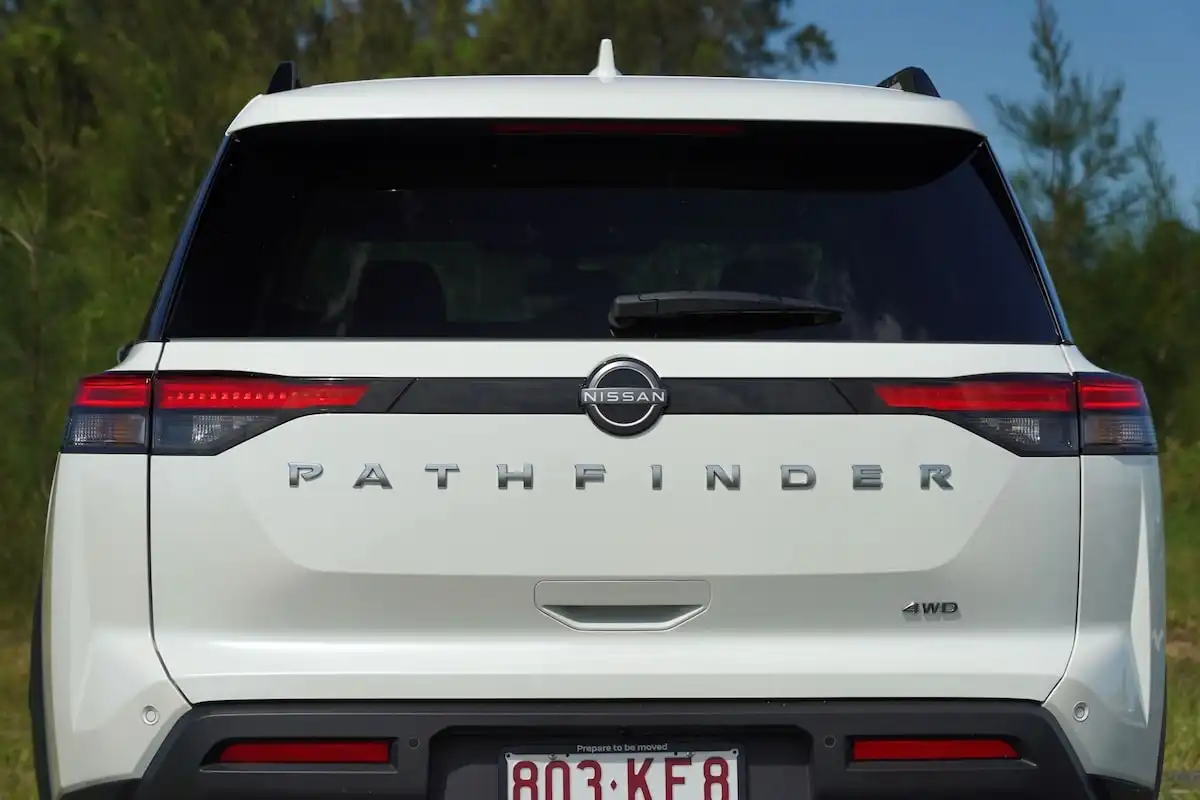
How Much Can OnlineAuto Save You?
Using OnlineAuto’s car buying service, you could save thousands on your next car with the help of our team of car-buying specialists.
Get in touch with one of our Car Buying Specialists today.
Request a quoteWhat Features Does the Nissan Pathfinder ST-L Have?
While the Pathfinder in ST-L form sits at the base of the lineup, it doesn’t disappoint when it comes to features.
Headlining the list is a set of 18-inch alloys, automatic LED headlights with LED fog lights, cloth upholstery with heated front seats and a leather-wrapped steering wheel, keyless entry & start, roof rails, eight-way power adjustment with lumbar support for the driver, rear privacy glass and three-zone climate control.
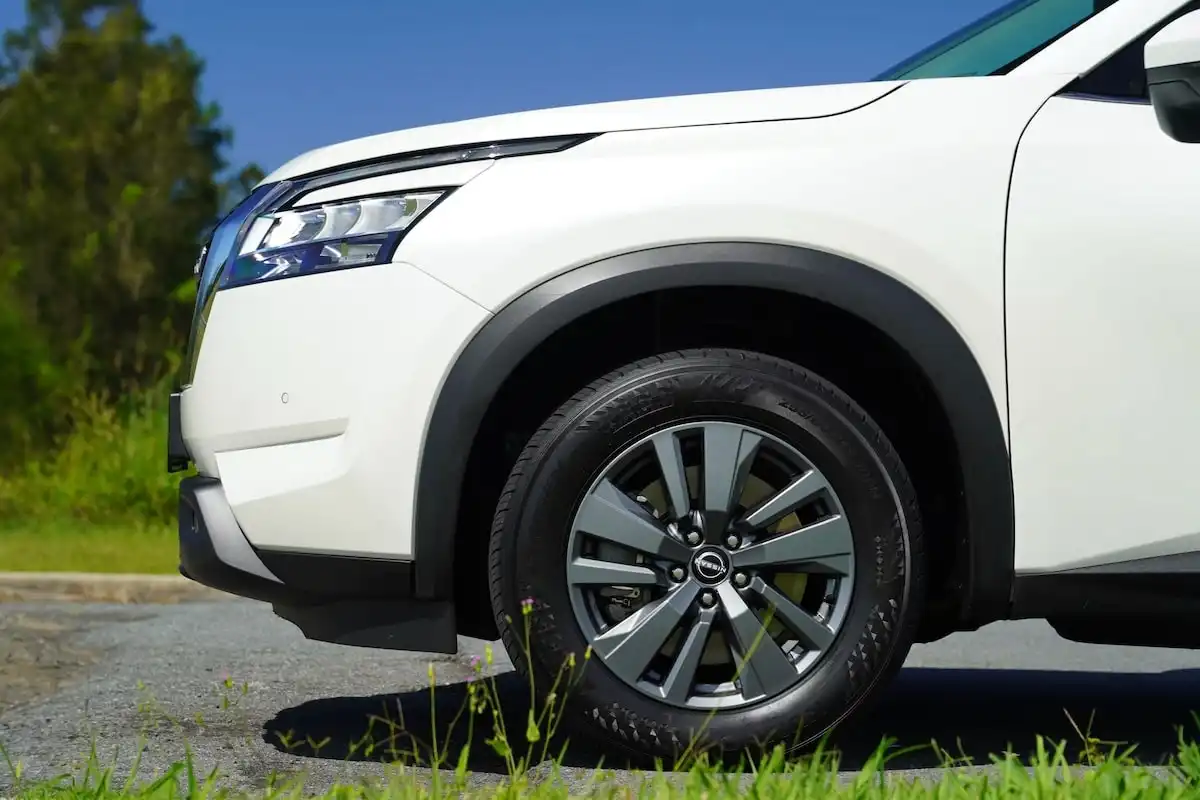
ST-L buyers also pick up a 10.8-inch head-up display, a powered boot lift, a 7.0-inch TFT instrument cluster, a surround-view monitor with front & rear parking sensors, adaptive cruise control with Nissan’s ProPilot system and a lengthy safety equipment list we’ll be covering later.
@onlineauto.com.au Ready to upgrade to a bigger SUV? Let OnlineAuto save you time & money! 💰 Nissan Pathfinder ST-L Quick Look! ✅Ten-year/300,000-kilometre conditional warranty ✅3.5-litre V6 petrol paired with nine-speed automatic ✅Eight-seat layout with 3 x ISOFIX anchors, 4 x top tether mounts ✅205 - 782L boot space ✅10.5/100km fuel economy 💬 Talk to one of us today & get a great deal with OnlineAuto! Check the link in our bio to read the detailed review! #onlineauto #Nissan #NissanPathfinder #FamilySUV #CarUpgrade #CarReview #TestDrive #BestDeals #NewCar #Straya #cartok ♬ original sound - OnlineAuto.com.au
Nissan Pathfinder Connectivity & Infotainment Features
The Nissan Pathfinder range meets expectations but certainly doesn’t exceed them when it comes to the onboard technology suite.
With a 9.0-inch touchscreen infotainment system sitting atop the dashboard, the Pathfinder’s technology suite is far from groundbreaking and is frankly humbled by some of its more contemporary peers on the technology scene.
While the screen resolution and refresh rate aren’t segment leading, the Pathfinder’s 9.0-inch display is bright and particularly easy to navigate thanks to a set of physical shortcuts beneath the display.
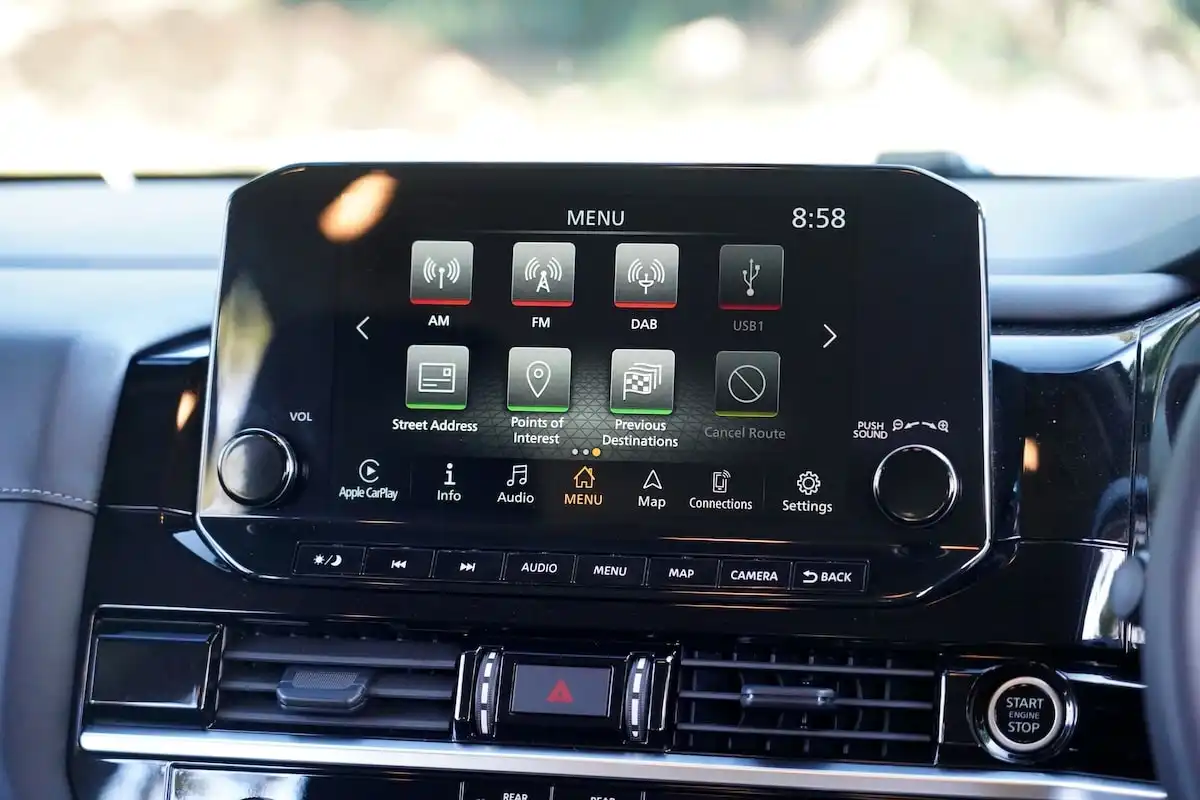
Nissan’s factory menu layout leaves a lot to be desired in terms of modernity and the separate camera feeds that culminate in the surround-view system aren’t particularly high definition, but they get the job done.
It’s an old-school technology package that might actually resonate well with some older buyers thanks to its user-friendliness, though technophiles won’t have their socks blown off.
The Pathfinder’s infotainment system is packaged with AM/FM & DAB+ digital radio alongside satellite navigation and is paired with a six-speaker sound system.
Does the Nissan Pathfinder Have Wireless Apple CarPlay & Android Auto?
Nissan offers wireless smartphone mirroring for just one major ecosystem, with Android users missing out on the hands-free tech.
The Pathfinder’s infotainment system offers wireless Apple CarPlay but requires a wired USB connection in order to access Android Auto, which is a bit of a shame and reflective of the company’s somewhat underwhelming infotainment tech.
That said, the process of pairing an iPhone with the Pathfinder’s infotainment system was a quick and simple process, it was quick to pair with our phone upon starting up and we experienced no noticeable drop-outs in the connection over a week behind the wheel.
-
Wireless Apple CarPlay - Yes
-
Wireless Android Auto - No (bring your own USB)
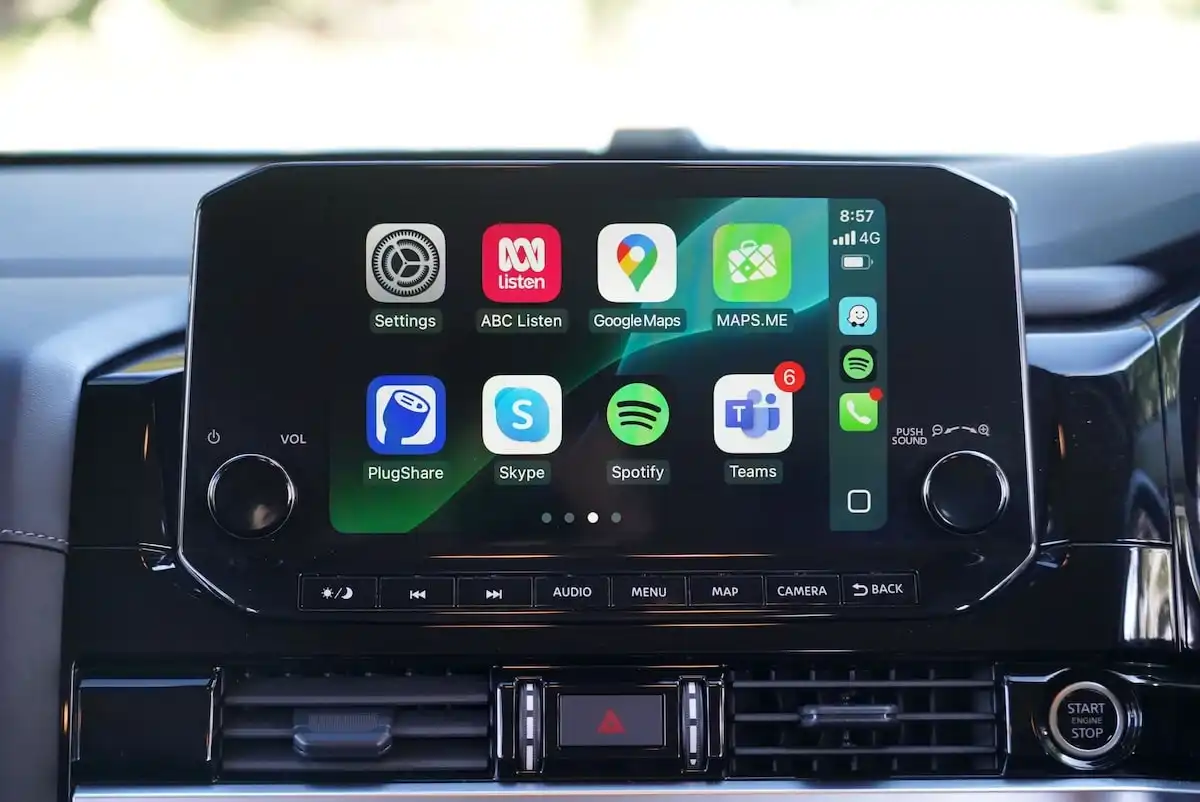
Is the Nissan Pathfinder Comfortable to Drive?
For a package with such a large, eight-seater footprint, Nissan has done well to keep the Pathfinder well-mannered on a daily drive.
This is, at least, in part due to its design philosophy and manufacturing as an American SUV platform, which means that it’s a pretty user-friendly experience on the road while remaining surprisingly composed on some of Australia’s rougher surfaces.
Kicking things off with a look under the bonnet, all members of the Pathfinder range come powered by a 3.5-litre naturally-aspirated V6 petrol unit that pushes out 202kW of power and 340Nm of torque.
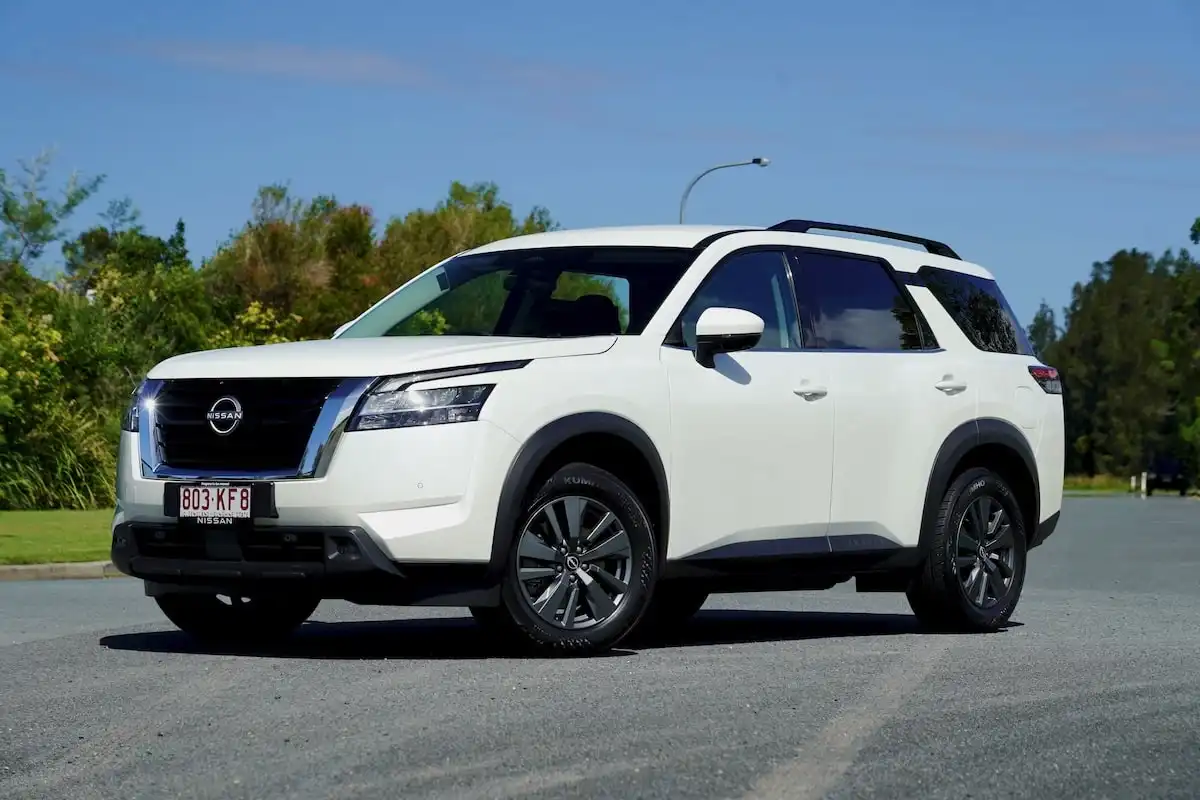
Power is thrown to all four wheels in this AWD variant via a nine-speed automatic, while there is also a more affordable front-wheel drive option that we think could be a great way to save an easy $5,000.
Off the line, the Pathfinder is pretty leisurely, with its powerful yet relaxed V6 engine happy to throw you up to speed in a smooth, linear fashion.
At times, you’ll need to stretch out the revs to get the power you’re hunting for, though Nissan’s nine-speed auto provides some snappy downshifts in your pursuit of torque.
While many of its rivals are on a mission to downsize, turbocharge and even hybridise their powertrains, Nissan’s V6 stands as a bold exception to the rule that some buyers will love and others might lament for its thirst.
Around town, however, Nissan’s V6 provides a particularly effortless driving quality where it is happy to bumble in an almost lazy fashion.
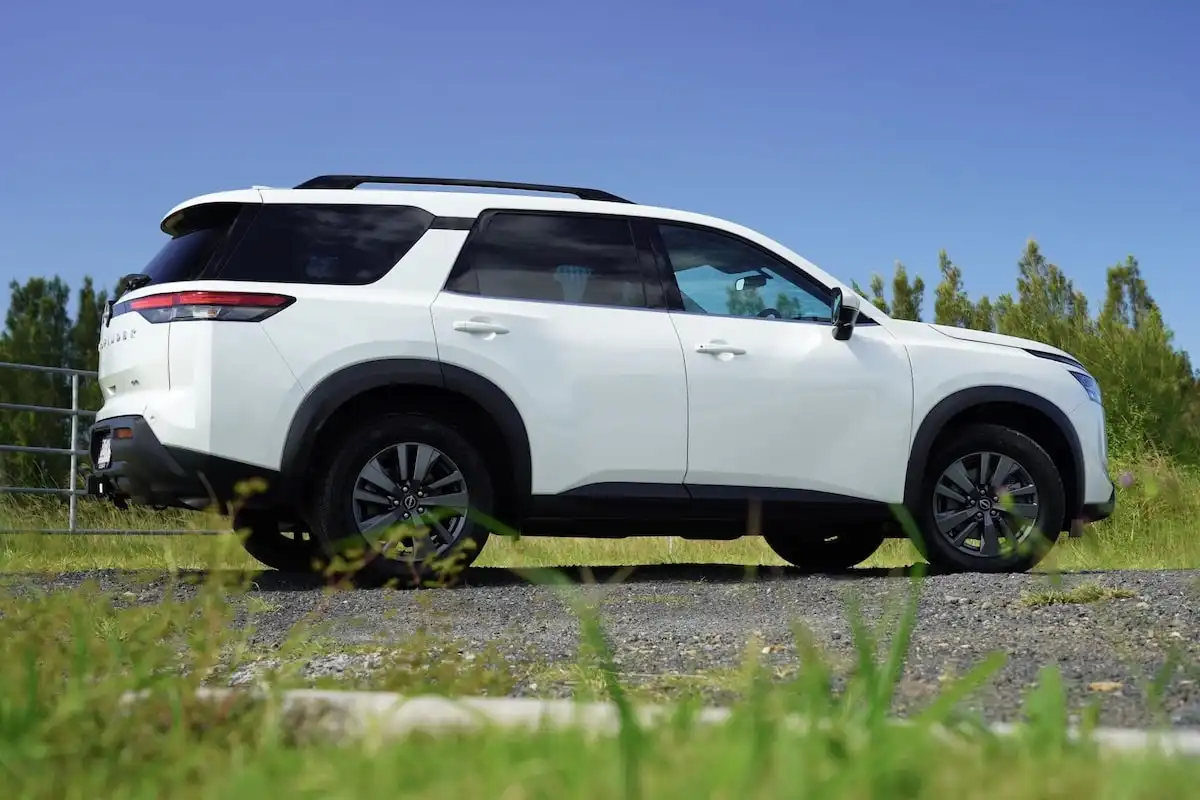
Couple that with a lightweight steering rack that makes three-point turns and parking a relatively simple task, the Pathfinder remains approachable and user-friendly for such a large package - though you will need to keep an eye on your proportions while parking.
The suspension package underneath is pretty well suited to the urban grind, too, especially with the ST-L’s smaller 18-inch wheels which allow for a wider tyre profile that proves more accommodating to bumps.
While it’s far from a sharp handling package, the Pathfinder’s suspension proves a great way to iron out small and moderate bumps around town without an issue - very much a testament to its U.S. origins.
This also works in its favour when you leave the city in the rear-view and trundle your way up a country road, where the Pathfinder remains well-planted and pretty confident on a rough stretch of B-road.
On the highway, the Pathfinder is a seriously strong performer.
It chews up kilometres with ease, offering up easy overtaking from its V6 powertrain while remaining smooth at higher speeds and nice and quiet inside the cabin thanks to a tonne of insulation hiding beneath the bodywork.
All up, Nissan’s American-centric design has translated rather well to the Pathfinder here in Australia, but is it any good off-road? Keep reading to find out.
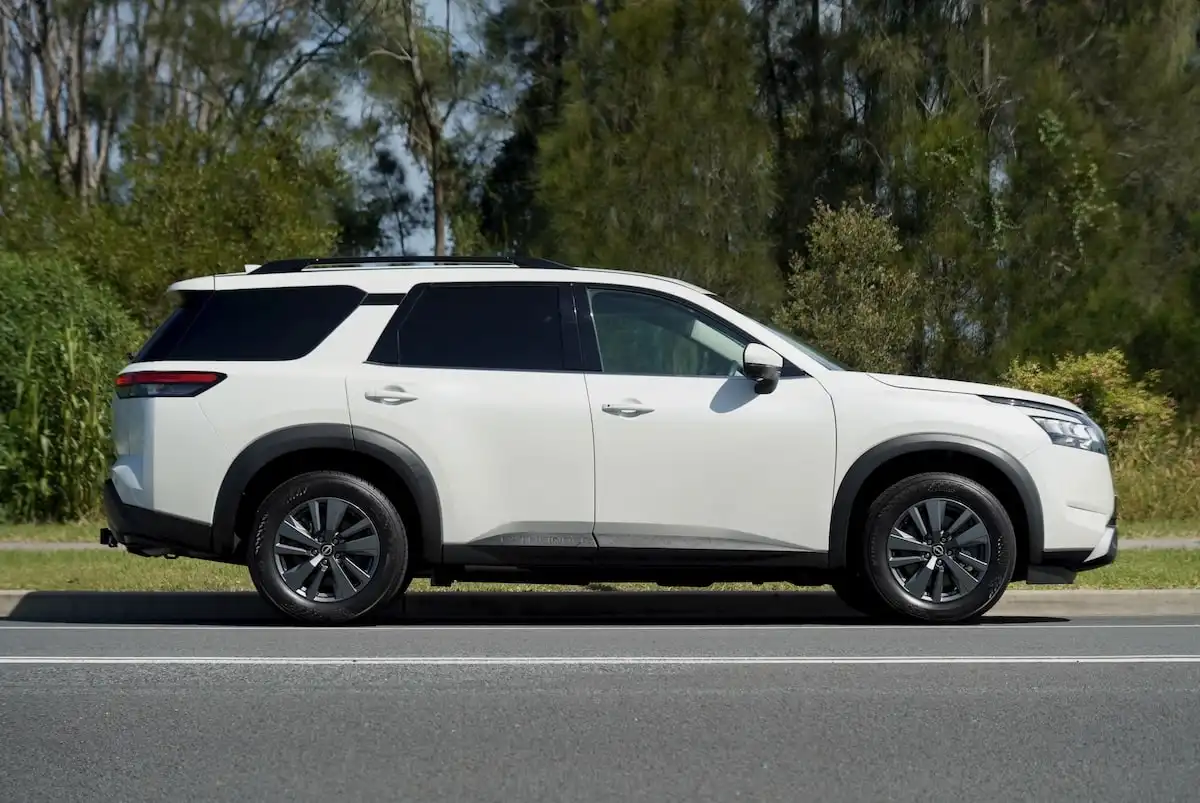
Is the Nissan Pathfinder Good Off-Road?
While it’s a big and bold SUV with a V6 beating heart and an all-wheel drive system, the Pathfinder is far more comfortable on the sealed stuff than it is, cough, finding a path off-road.
While there are seven modes in the Pathfinder’s 4x4 system, including sand, snow, mud and towing- though its off-road abilities are ultimately hindered by some dimensions lacking in key areas.
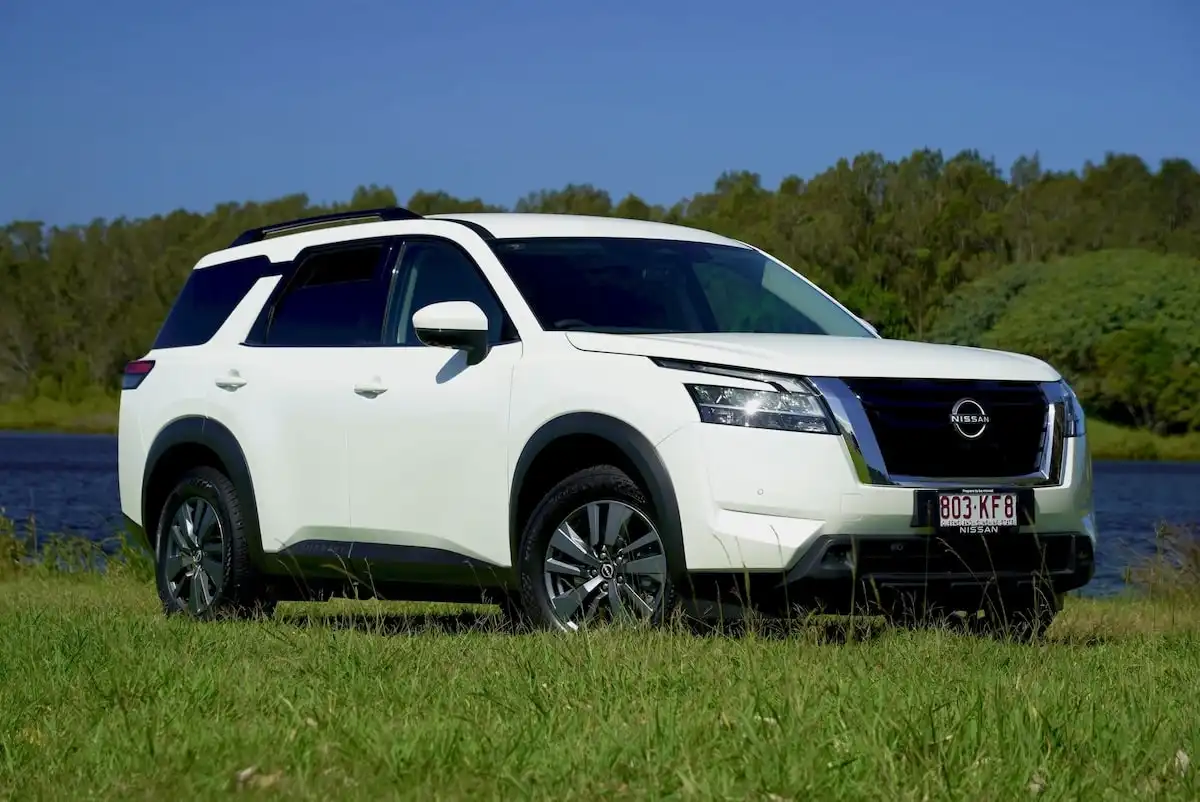
With just 179mm of ground clearance from the unibody platform, rather than a more adventurous and hardcore body-on-frame construction, the Pathfinder’s road-centric nature is pretty clear to see.
There’s also a protective apron that drops down at the front lip that limits the Pathfinder’s approach angle to 16.1 degrees while the breakover and departure angles stand at 21.1 and 15.6 degrees, respectively.
The Pathfinder’s ample power from the V6 petrol and all-wheel drive system certainly add some confidence to the mix on the loose stuff, but it’s far more of a weekend light off-roader than its bigger sibling, the Patrol.
-
Ground Clearance: 179mm
-
Approach Angle: 16.1 degrees
-
Breakover Angle: 21.1 degrees
-
Departure Angle: 15.6 degrees
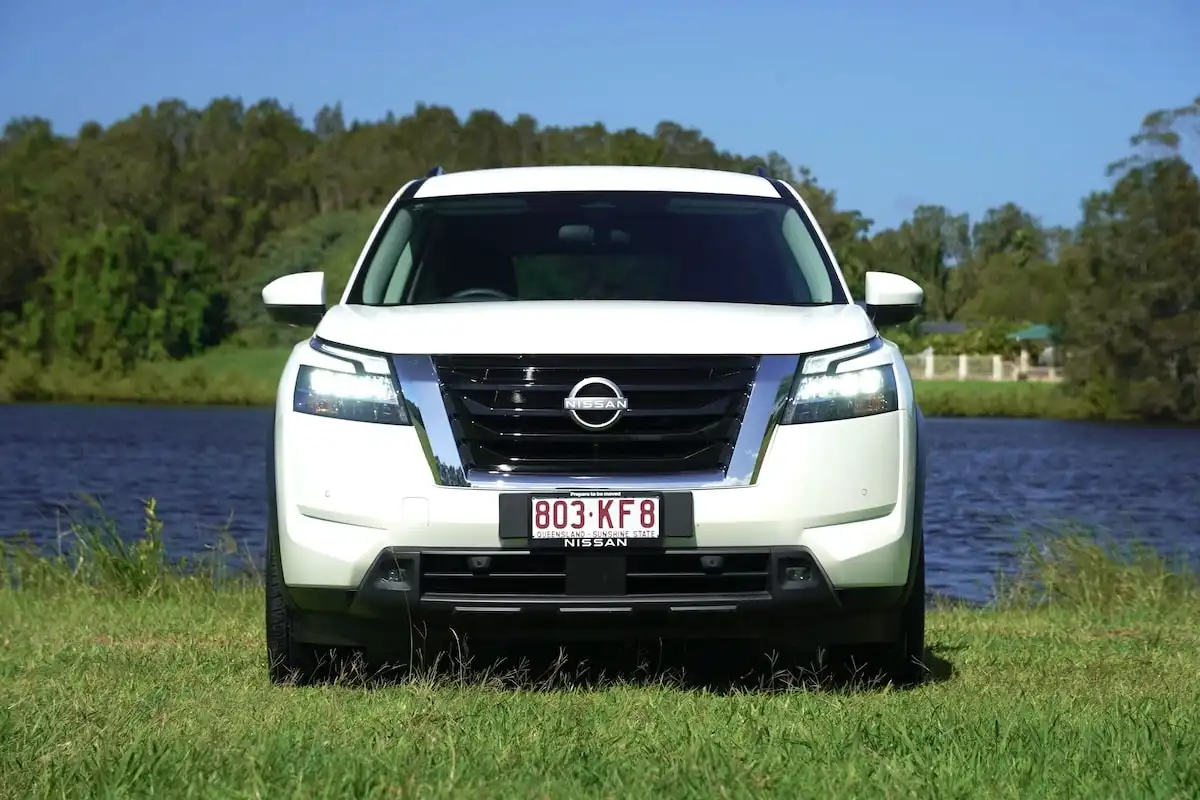
How Much Can the Nissan Pathfinder Carry & Tow?
While it’s not a hardcore off-roader, the Pathfinder offers some decent towing and payload capabilities that widen its appeal as an adventurous, eight-seater SUV package for Australian buyers.
The MY25 Pathfinder offers braked towing figures totalling 2,700kg while the maximum towball download sits at 270kg while payload figures vary between 667 - 706 kg, depending on the variant.
The Pathfinder’s gross vehicle mass stands at 2,682kg.
-
Braked Towing Capacity: 2,700kg
-
Unbraked Towing Capacity: 750kg
-
Payload: 667 - 706kg
-
Gross Vehicle Mass: 2,682kg
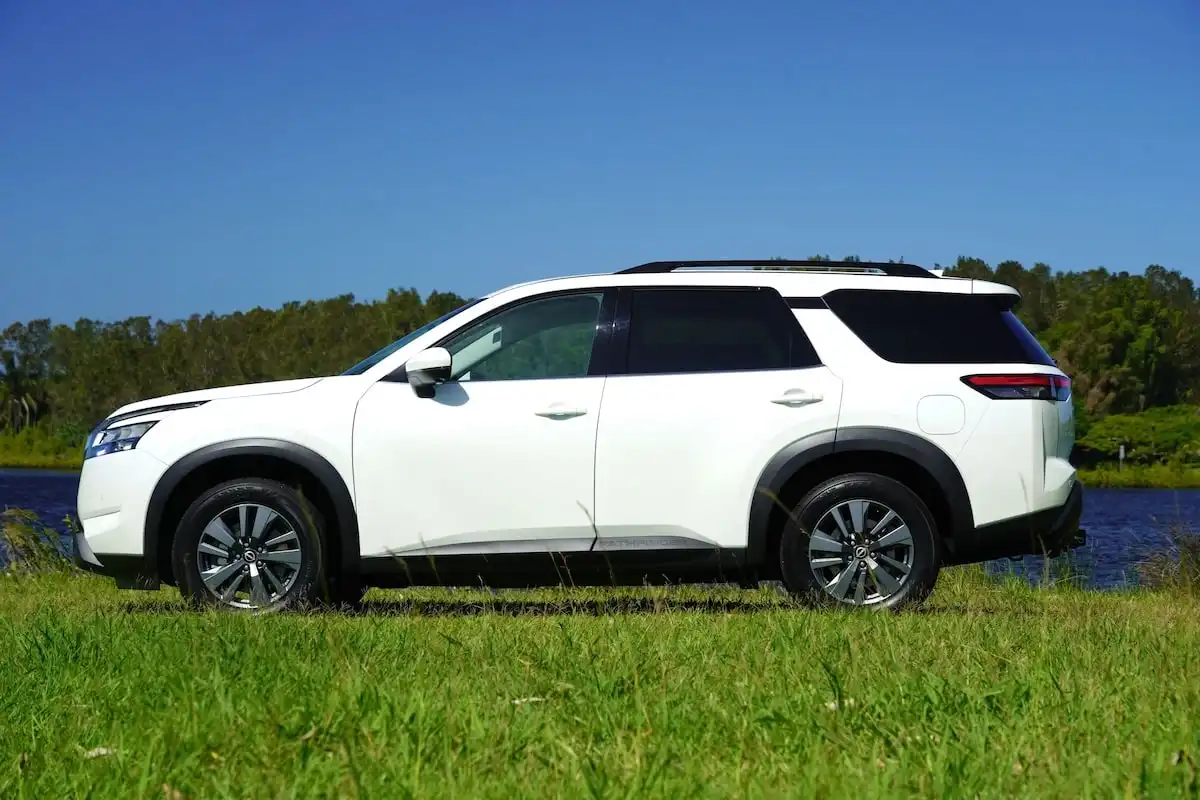
Is the Nissan Pathfinder Fuel Efficient?
The Nissan Pathfinder bucks industry conventions and sticks with a tried-and-tested V6 petrol over a smaller, forced induction or hybridised powertrain.
As a result, it’s got quite the thirst when compared to its biggest-selling rivals, especially so if you’re spending most of your time around the urban jungle.
Nissan says that the Pathfinder is rated at 10.5L per 100km on a combined cycle.
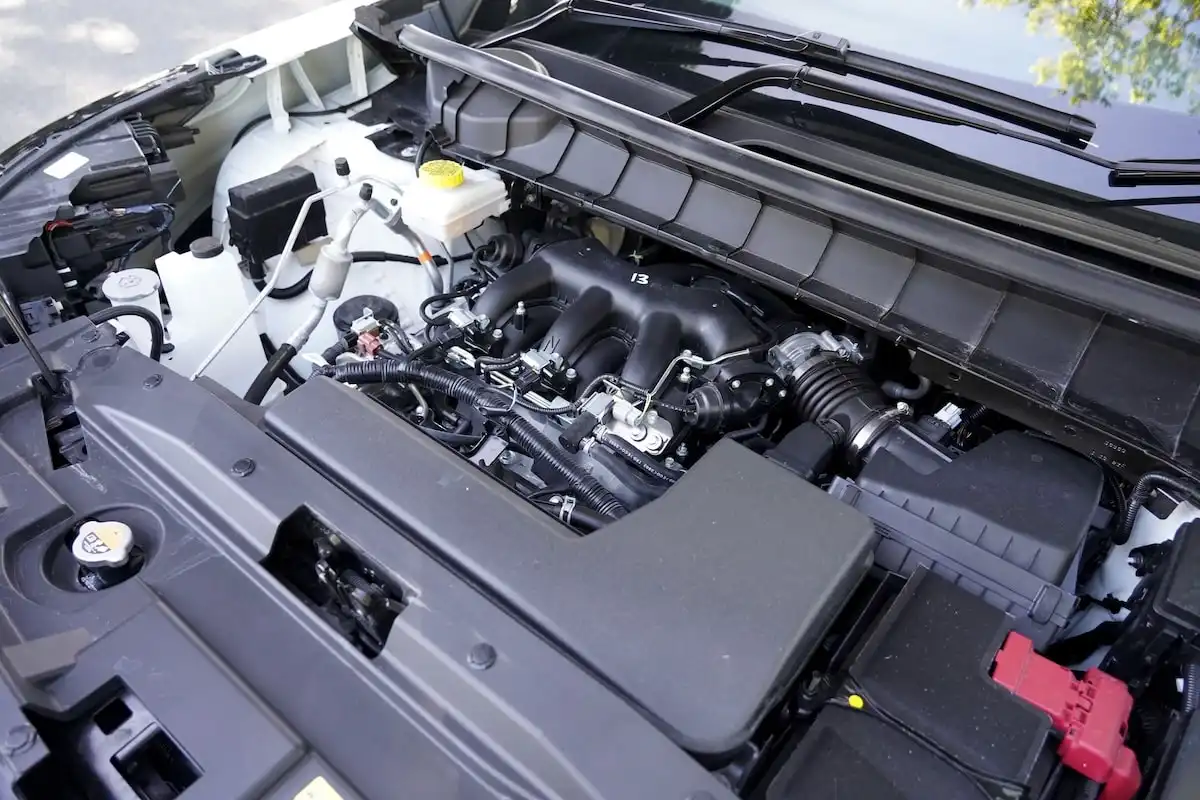
During our time behind the wheel, we averaged 9.7L per 100km over a mix of country roads, town and highway driving covering 733km.
Around town, the Pathfinder drinks a hefty 14.7L/100km while dialling things back to a more responsible 8.1L/100km on the highway, though it remains one of the least efficient in its respective segment.
Ultimately, the Pathfinder’s thirst is likely to prove one of the biggest hurdles for buyers to overcome, which will add up considerably over a lifetime when compared to a more efficient turbo-diesel or a hybrid powertrain.
The Nissan Pathfinder comes equipped with a 71L fuel tank and can drink 91 RON fuel which helps to lessen the sting of the frequent trips you’ll be doing to the servo if you’re driving predominantly through the urban jungle.
-
Pathfinder City Fuel Economy: 14.7L/100km
-
Pathfinder Highway Fuel Economy: 8.1L/100km
-
Pathfinder Combined Fuel Economy: 10.5L/100km (claimed)
-
Pathfinder Combined Fuel Economy: 9.7L per 100km (tested)
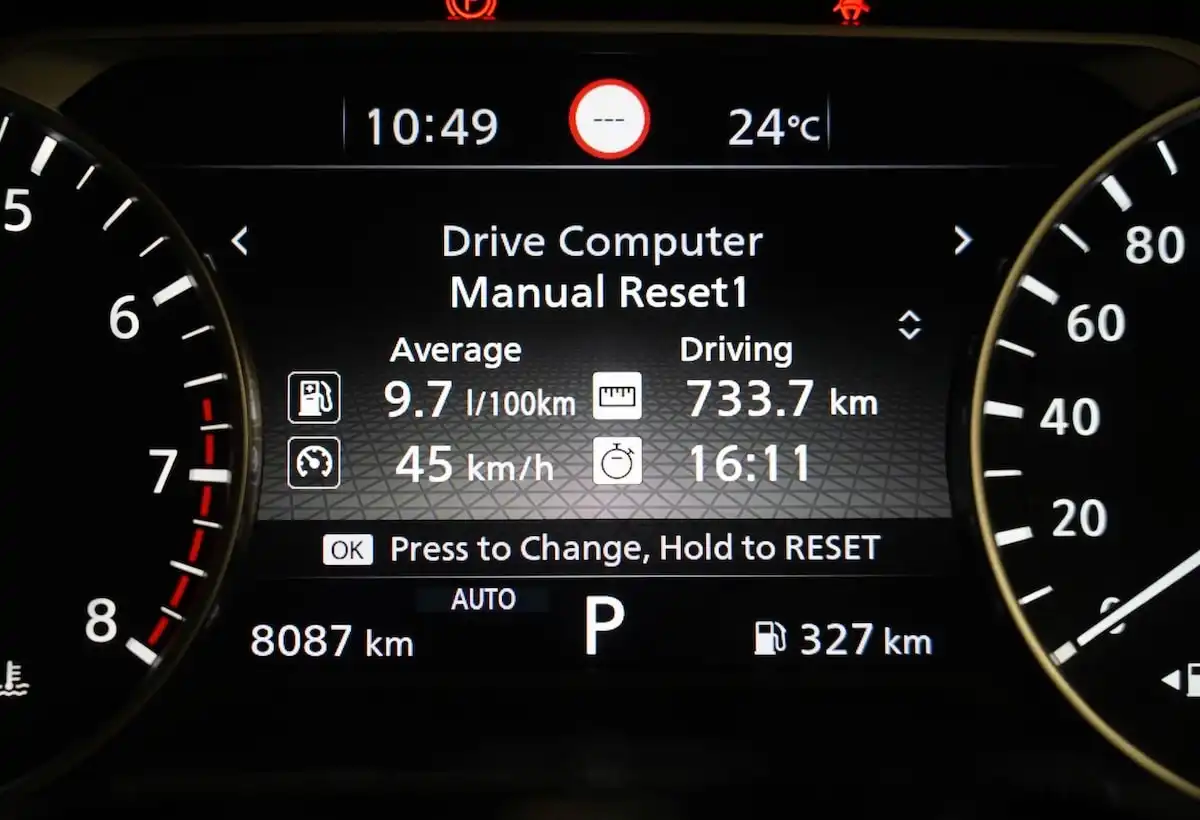
Is the Nissan Pathfinder Practical?
The Nissan Pathfinder excels as a large and practical family spaceship.
While its interior design doesn’t do much in the way of inspiration, the Pathfinder’s sheer footprint and some clever touches from Nissan’s designers have culminated in a particularly family-friendly eight-seater package.
Climb aboard and you’re treated to tonnes of space in the front of the cabin and while the dashboard and bonnet rise quite high, the power-adjustable pilot’s seat can be raised to get a better view without sacrificing much in the way of headroom.
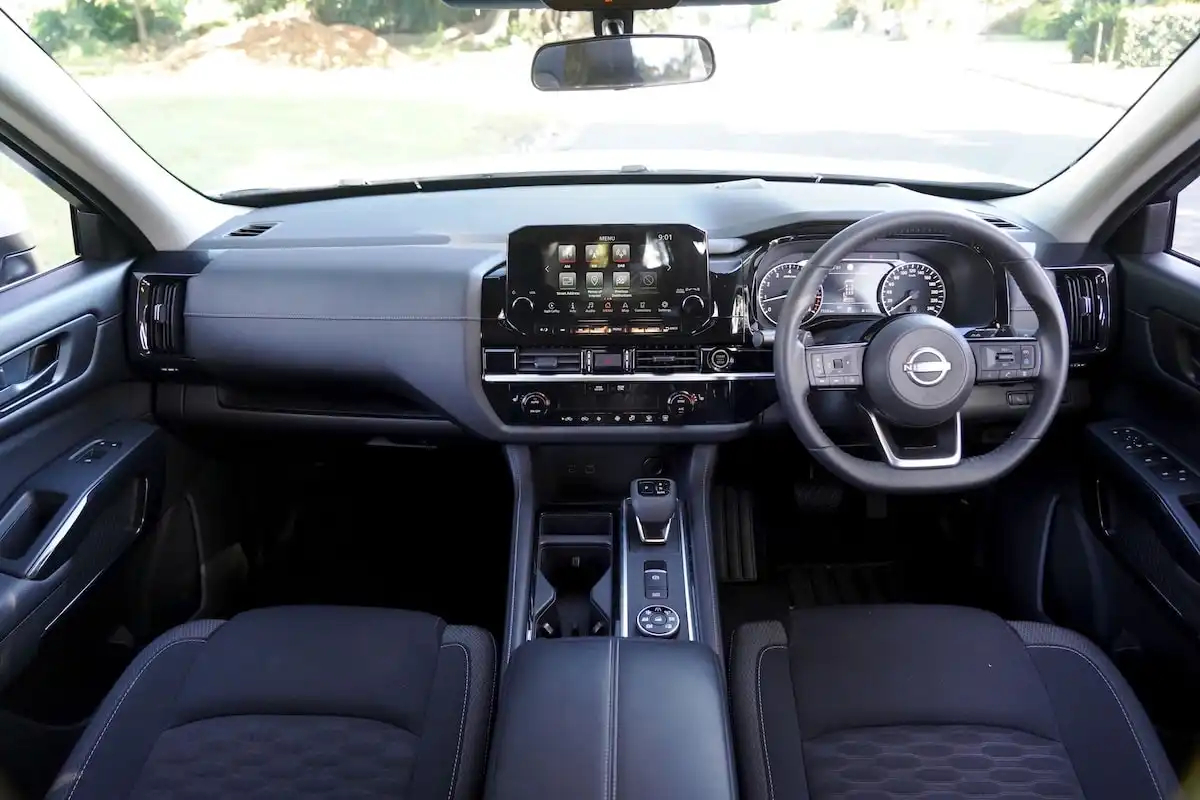
Forward and side visibility marks are strong thanks to the lofty roofline while there’s also a decent view through the rear three-quarter panel thanks to a small window at the third row.
The Pathfinder ST-L is the more affordable version of the range and makes do with some more basic features like cloth upholstery, though seat heaters and some leatherette finishes for the door sills and dashboard help to keep things relatively upmarket.
There are nice soft touchpoints for your elbows with strong marks for ergonomics all around thanks to the reach- and rake-adjustable steering wheel and simple climate control layout.
Arguably, the strongest selling point of the Pathfinder is the sheer amount of practical touches in the front of the cabin.
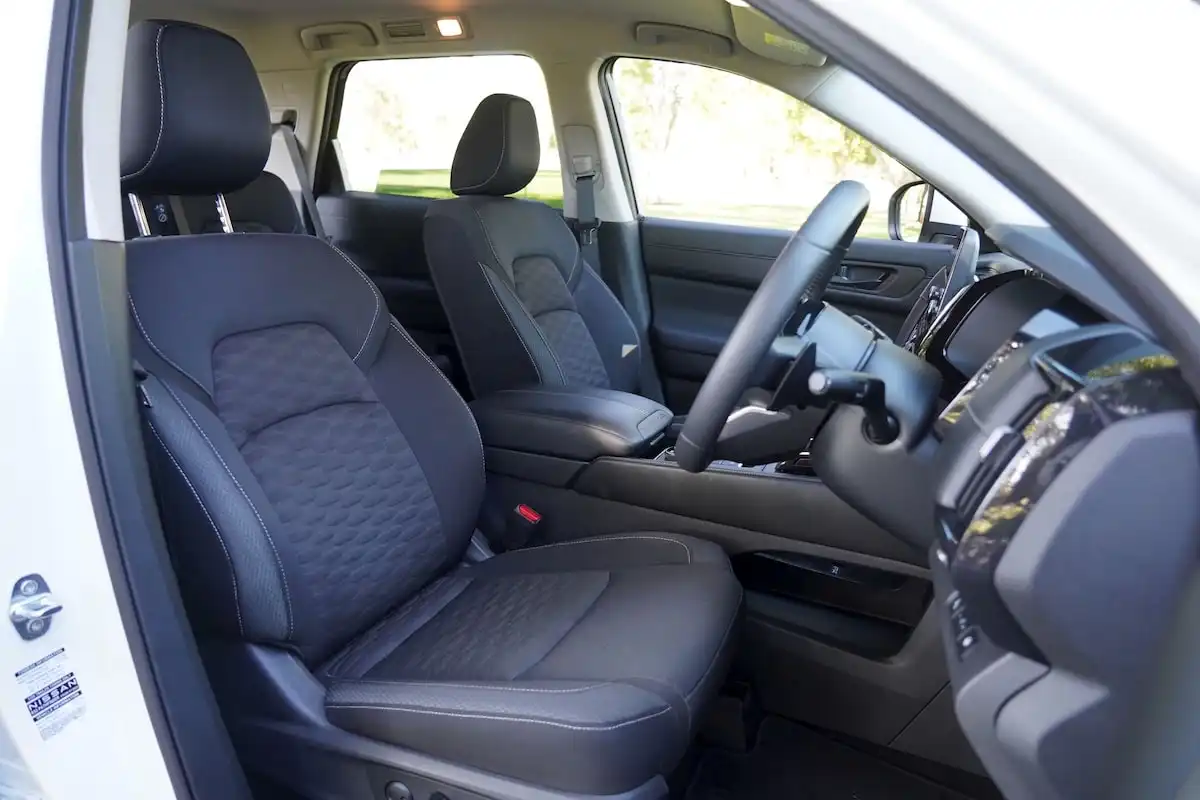
There’s storage aplenty thanks to the unique centre console design with a nifty storage compartment hiding beneath, which is big enough to house a handbag or a large water bottle.
The top of the centre console houses a large, rubber-lined tray hiding behind the gear lever, a pair of cupholders, a small key stash - that proves perfect for vertically-standing smartphones - and a serious amount of real estate inside the folding armrest.
There’s also a pair of large door bins and an additional tier of storage placed above the glovebox, proving itself as a seriously practical cockpit.
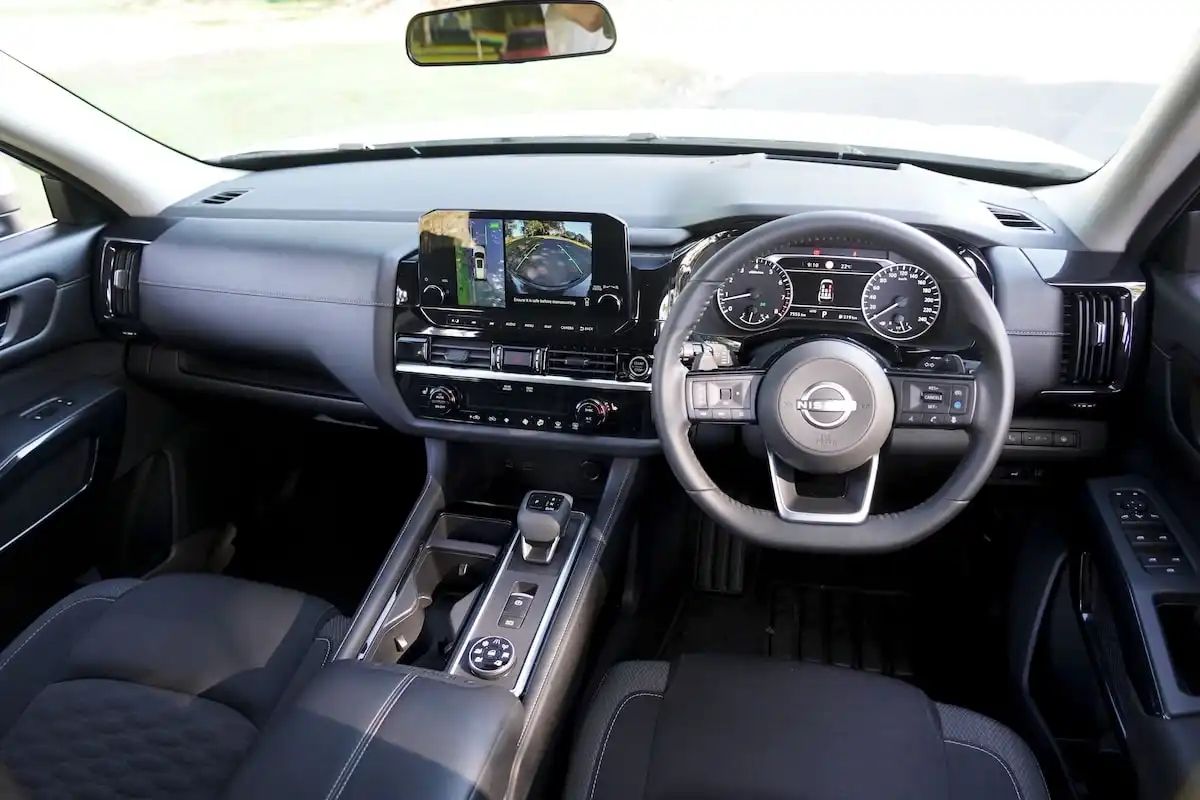
Move to the second row of the cabin and there’s enough legroom for adults to sit behind a tall driver’s seat, though headroom is a little tight for anyone tall seated in the rear.
The Pathfinder’s cabin is nice and wide, which means you won’t have much of a problem seating three-abreast in the second row, with a folding armrest dropping down with a pair of cupholders and a narrow little storage area.
Those seated in the rear pick up a pair of USB charging ports and two cupholders on each of the door sills which sit above a bin that can eat up a large water bottles without an issue, with a decent angle of recline for the seats and the ability to slide back and forth on a set of rails.
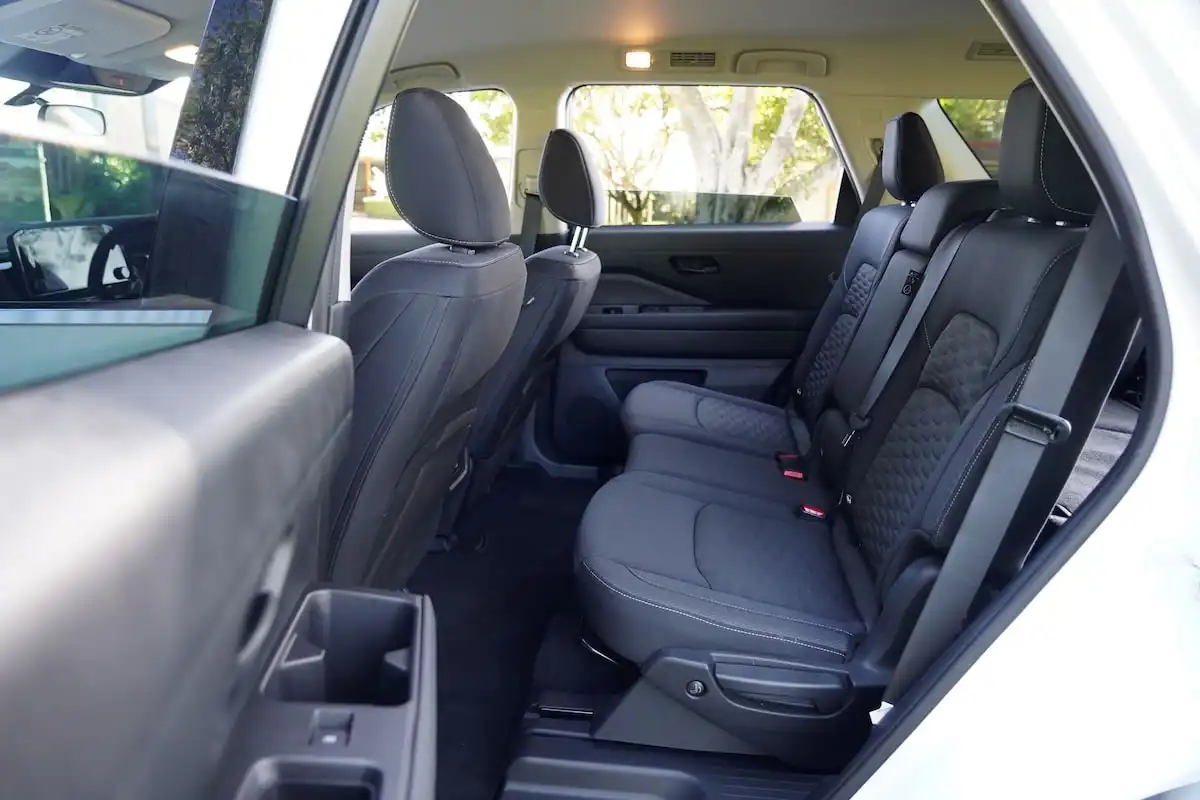
Nissan obviously made it clear that no beverage shall go unhoused inside the Pathfinder’s vast an practical cabin, with no less than six on offer in the second row alone.
Accessing the third row of the Pathfinder’s cabin is relatively simple with a single button press, offering a fold-and-slide for the second row that makes it easy for kids to slide into the rearmost of the cabin.
Real estate is pretty tight back here, proving too tight for adults but a great place for young ones to sit back with a set of reclining seats and even gain a bit of a view out of the cabin from the small windows that avoid making things a dark, claustrophobic affair.
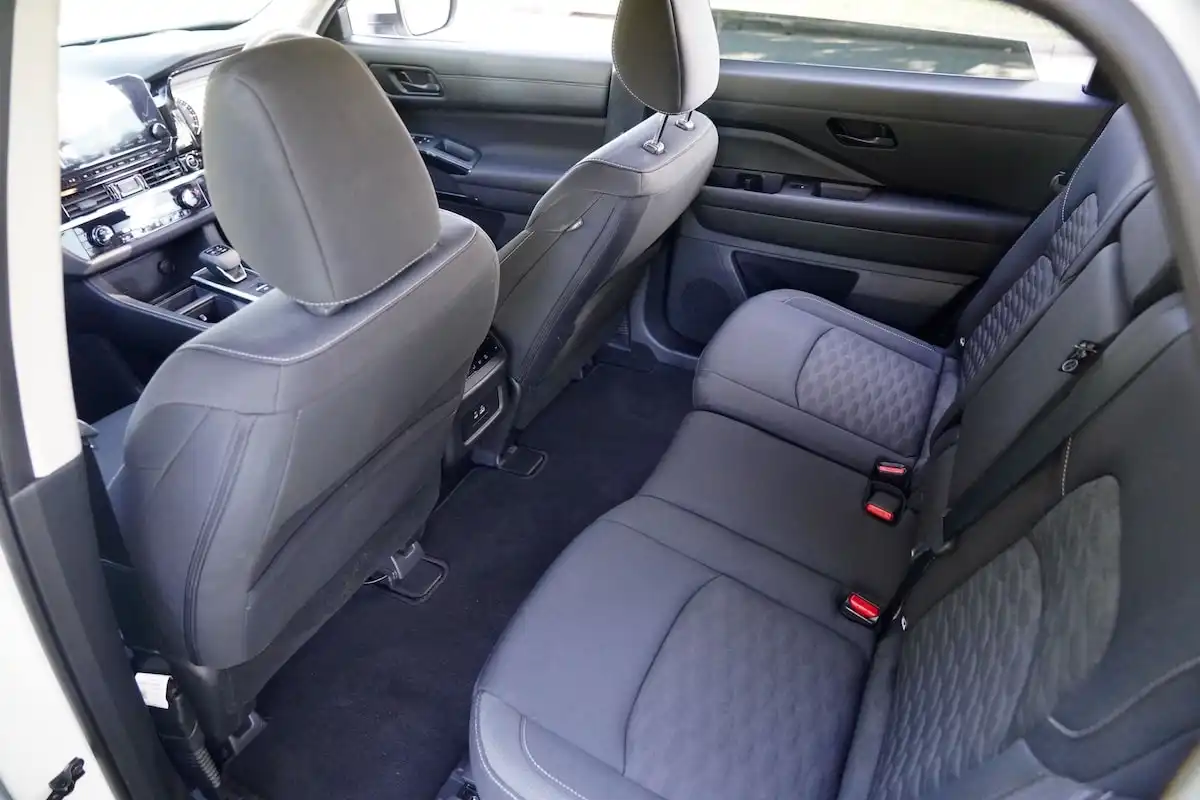
Once again, there’s no shortage of cupholders - four in total in the third row - though your only other amenities come in the form of some roof-mounted air vents, but no charging ports.
For the parents out there, the Pathfinder has two pairs of ISOFIX anchors in the second row with top tether mounts hiding on the seatbacks, while the third row also picks up an ISOFIX mount on the left-hand side of the cabin with a single top tether mount.
In isolation, the Pathfinder’s cabin is simple and effectively utilitarian from a family perspective though it’s ultimately outshined by some of its more modern rivals that manage to tick the boxes of aesthetics and practicality.
That said, the Pathfinder can accommodate a family of eight with a high degree of confidence and, for many family-buyers, aesthetics come as a second priority after outright practicality, which this offers in spades.
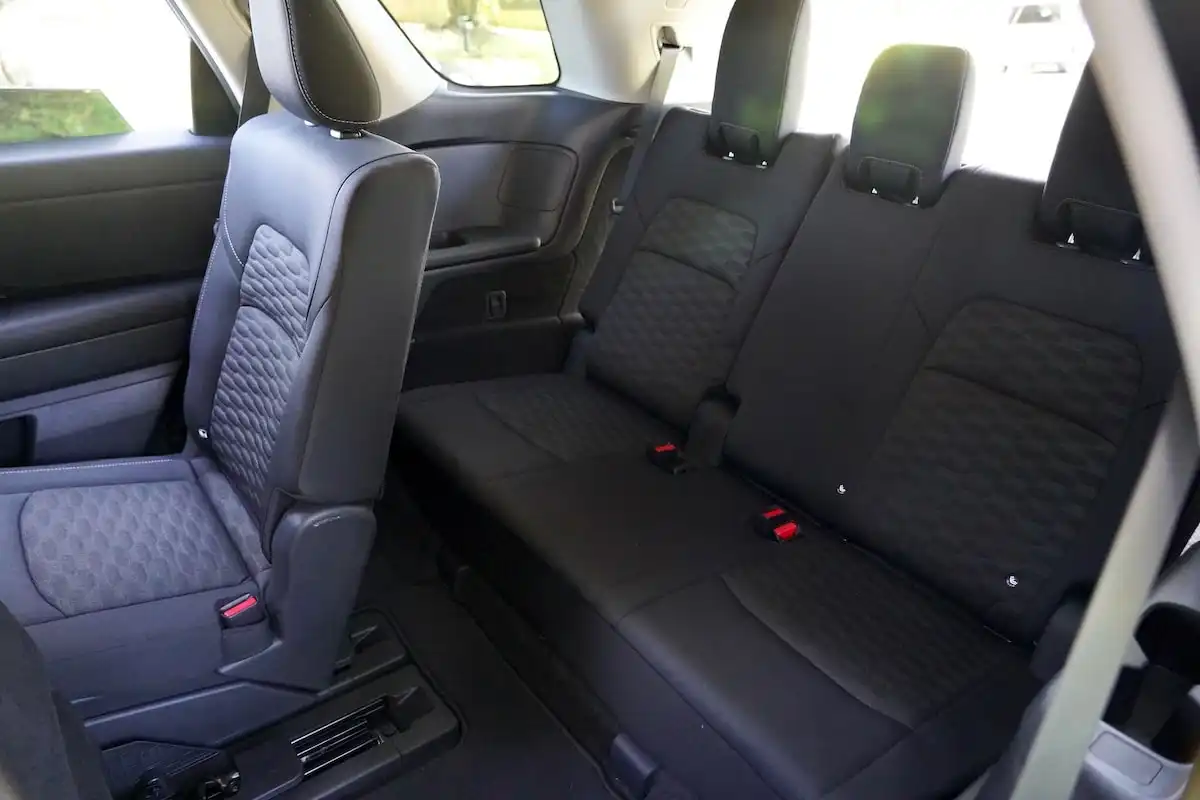
How Big is the Nissan Pathfinder’s Boot?
Outright boot space in the Nissan Pathfinder depends on whether you’re opting for an eight- five- or a two-seat layout.
On paper, Nissan says the Pathfinder with all three rows in play has a boot measuring 205L, expanding to 554L with the third row folded in a five-seat layout.
We’re not sure exactly what measurement system Nissan is using for these figures because the on-paper totals somewhat undersell the actual real estate on offer.
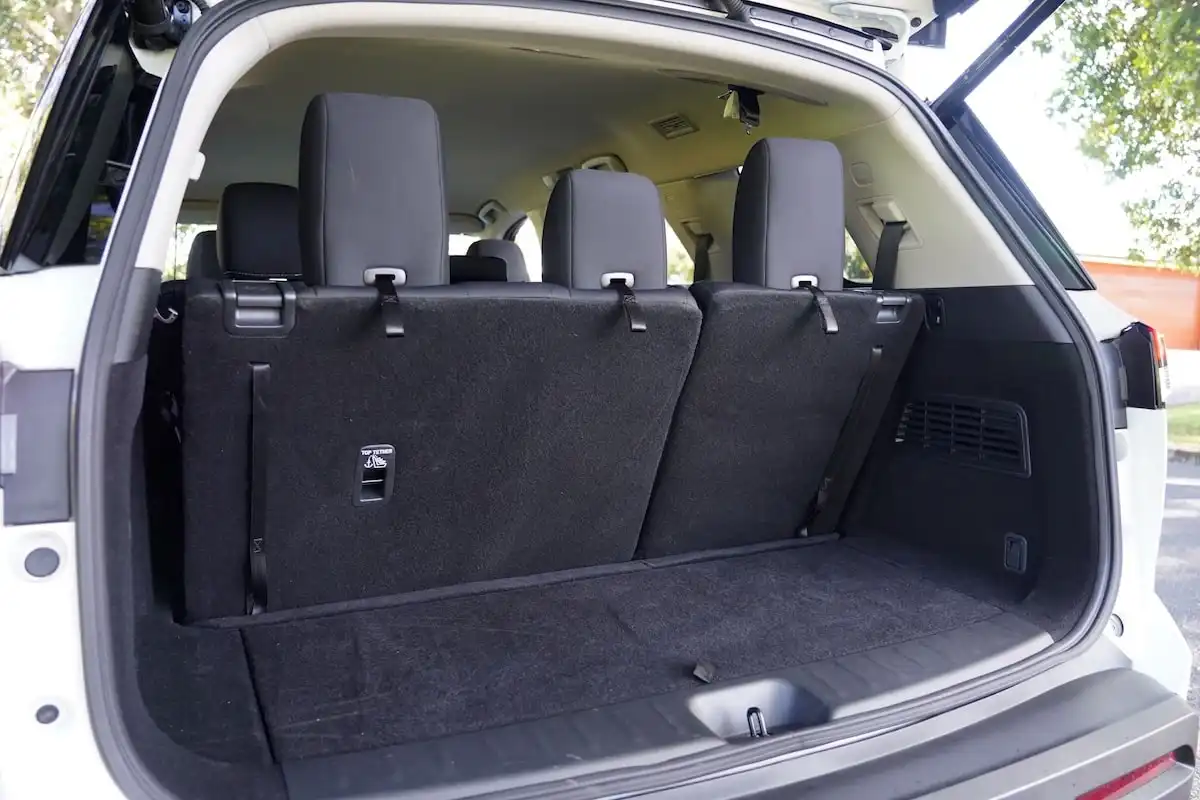
Folding the second row of seats down unlocks 782L worth of cargo space, with plenty of acreage on offer to accommodate sports gear, surfboards or a run to the hardware store thanks to the wide cabin and tall roofline.
One downside is that the Pathfinder doesn’t offer a full-sized spare tyre, just a space-saver unit hiding underneath, though some added storage hiding beneath the boot floor and a number of tie-down hooks to secure loose cargo help sweeten the deal back here.
-
Pathfinder Boot Space Minimum: 205L
-
Pathfinder Boot Space Five-Seat: 554L
-
Pathfinder Boot Space Maximum: 782L
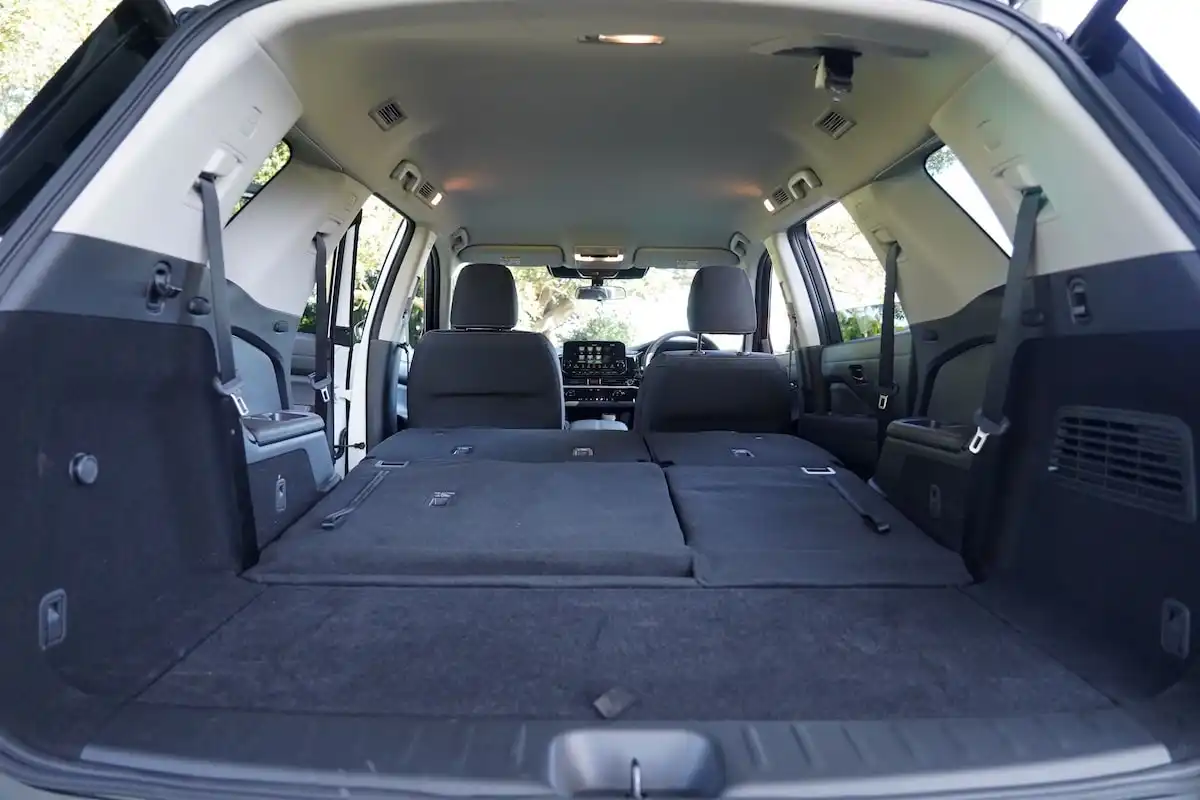
Is the Nissan Pathfinder Safe?
While the Pathfinder ST-L is a base model, it comes packing a lengthy safety equipment list that will leave few buyers needing more.
The Pathfinder ST-L is packaged with forward and reverse autonomous emergency braking with junction assist and both pedestrian and cyclist detection alongside adaptive cruise control, blind-spot monitoring and rear cross-traffic alerts.
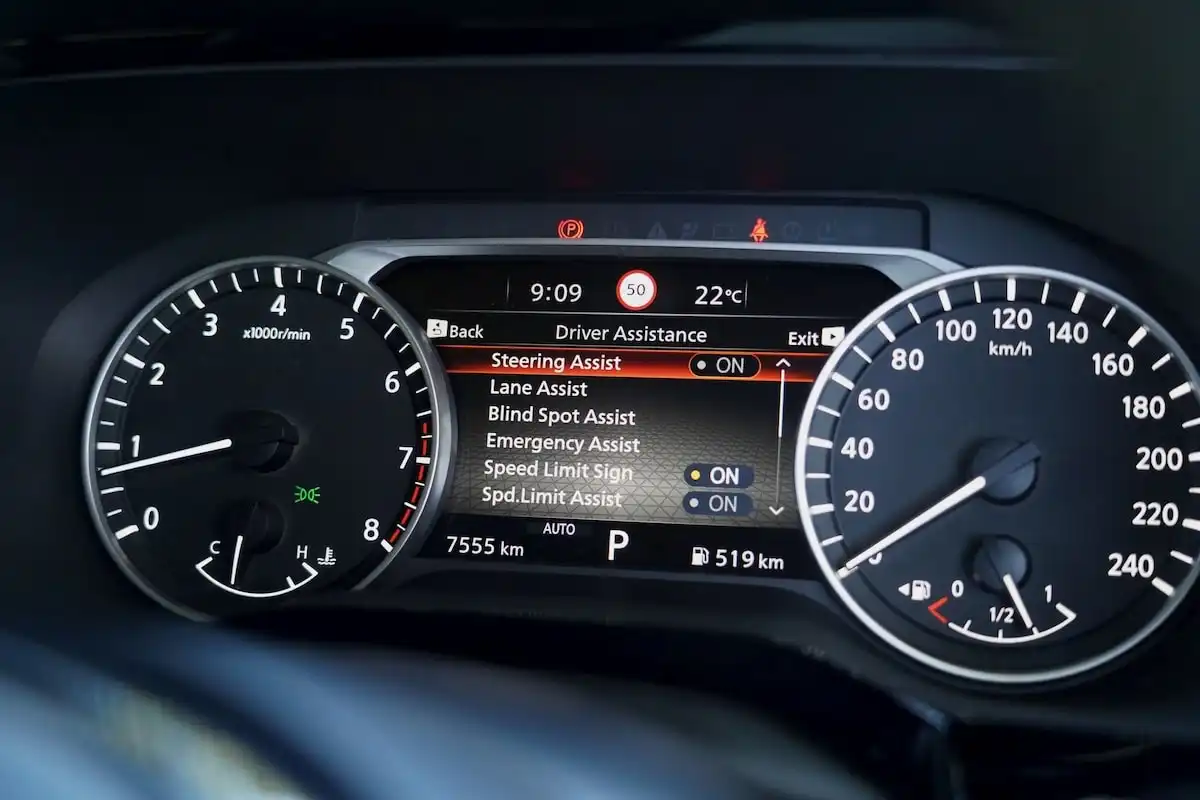
Buyers also pick up Nissan’s ProPilot driving suite which combines the adaptive cruise control system with lane-centring and lane-keep assistance, while there’s also traffic sign recognition, a surround-view monitor with front & rear parking sensors and curtain airbags throughout the cabin.
All things considered, the Pathfinder range ticks all the important safety boxes that buyers are looking for, with no key features reserved for the more premium Ti and Ti-L variants.
Does the Nissan Pathfinder Have an ANCAP Safety Rating?
The MY25 Pathfinder range wears a five-star ANCAP safety rating after scoring the following marks in its 2022 testing.
-
Adult Occupant Protection: 86%
-
Child Occupant Protection: 93%
-
Vulnerable Road User Protection: 78%
-
Safety Assist: 85%
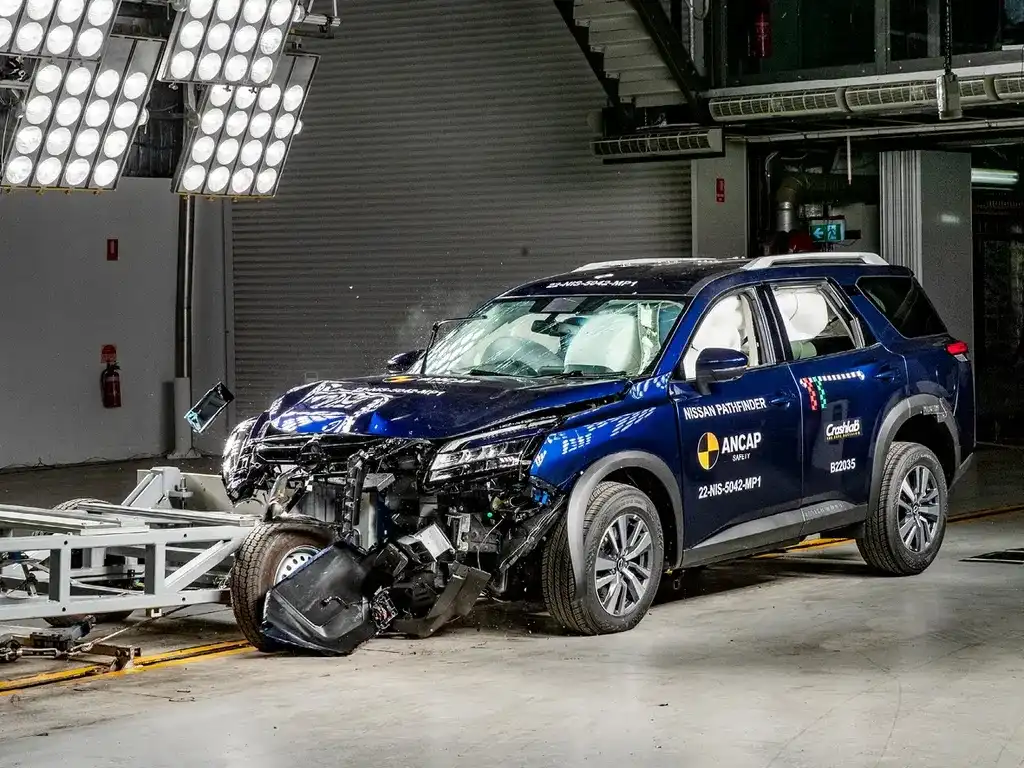
What Warranty Does the Nissan Pathfinder Come With?
One of the key selling points for the latest Pathfinder range is Nissan’s outstanding warranty program.
Since its launch, Nissan has upgraded the Pathfinder’s warranty from a five-year/unlimited-kilometre warranty to a ten-year program if you keep it serviced within the company’s dealer network.
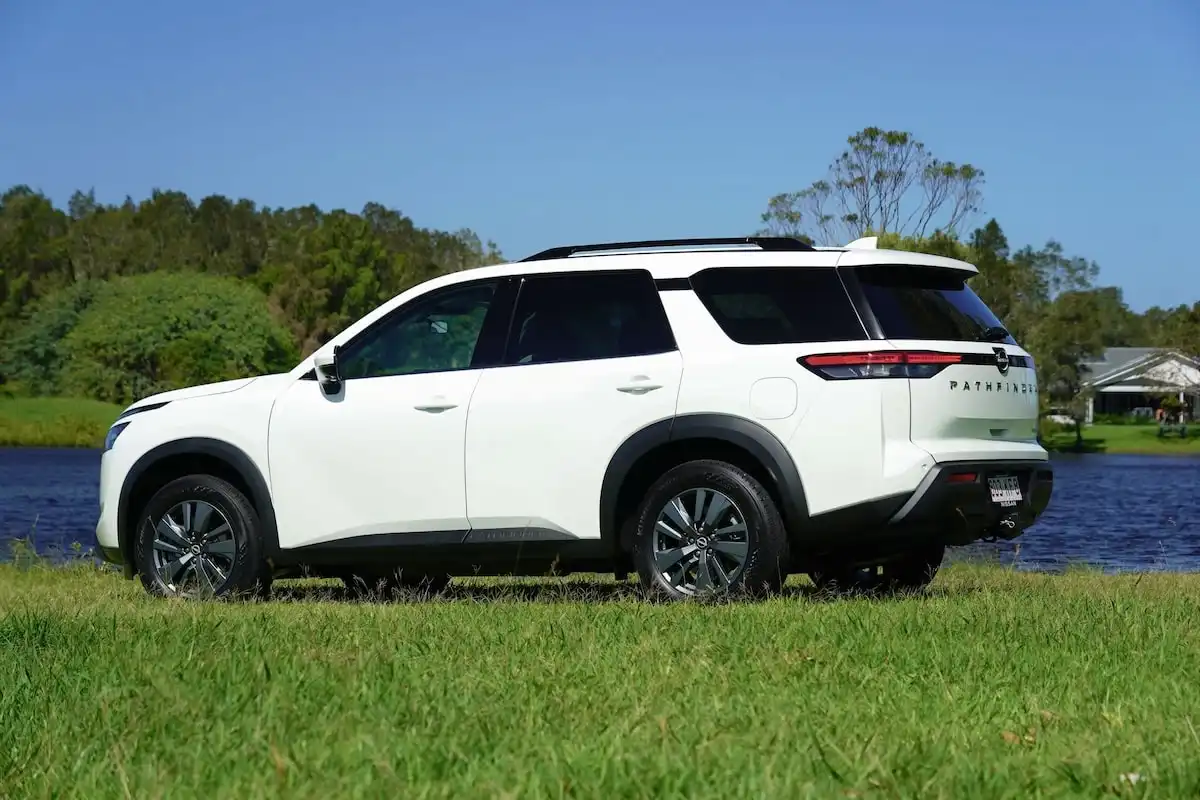
Nissan’s ten-year/300,000-kilometre warranty comes in addition to a 12-month roadside assist subscription that is extended out to ten years when you keep it serviced in-network.
The company offers capped-price servicing packages for the Pathfinder range which total a very reasonable $1,995 for five visits to the service centre.
Service intervals for the MY25 Pathfinder range sit at 12 months or 15,000 kilometres, whichever elapses first.
Our Verdict: Is the Nissan Pathfinder Worth it?
The Nissan Pathfinder is a strong performer under the family test, though its widespread appeal and ability to fight key rivals are somewhat limited by the thirsty V6 petrol lurking beneath the bonnet.

While it’s a lovely engine on the road, the Pathfinder’s thirst around the urban jungle means that some of its main rivals leapfrog it on the efficiency front which is, arguably, one of the main priorities for family buyers these days.
That said, as a fit-for-purpose family SUV, the Pathfinder remains confident in the face of a large family.
The addition of the more affordable ST-L range has also given the Pathfinder some legs on the value front, remaining one of the smartest picks in the range for buyers that don’t need a heap of luxury thrown into the mix.
Is the Pathfinder ST-L worth it? It’s a tough sell, which is more of a testament to the quality of many of its rivals, though it does manage to tick many important boxes for families like practicality, safety and of course, Nissan’s ten-year warranty.
If we were throwing down our money, we’d stick with the front-wheel drive version of this ST-L grade and pocket the $5,000 savings for future fuel bills.
Don’t forget that our team of car-buying experts is ready to get you the best deal possible on your next car - reach out now!
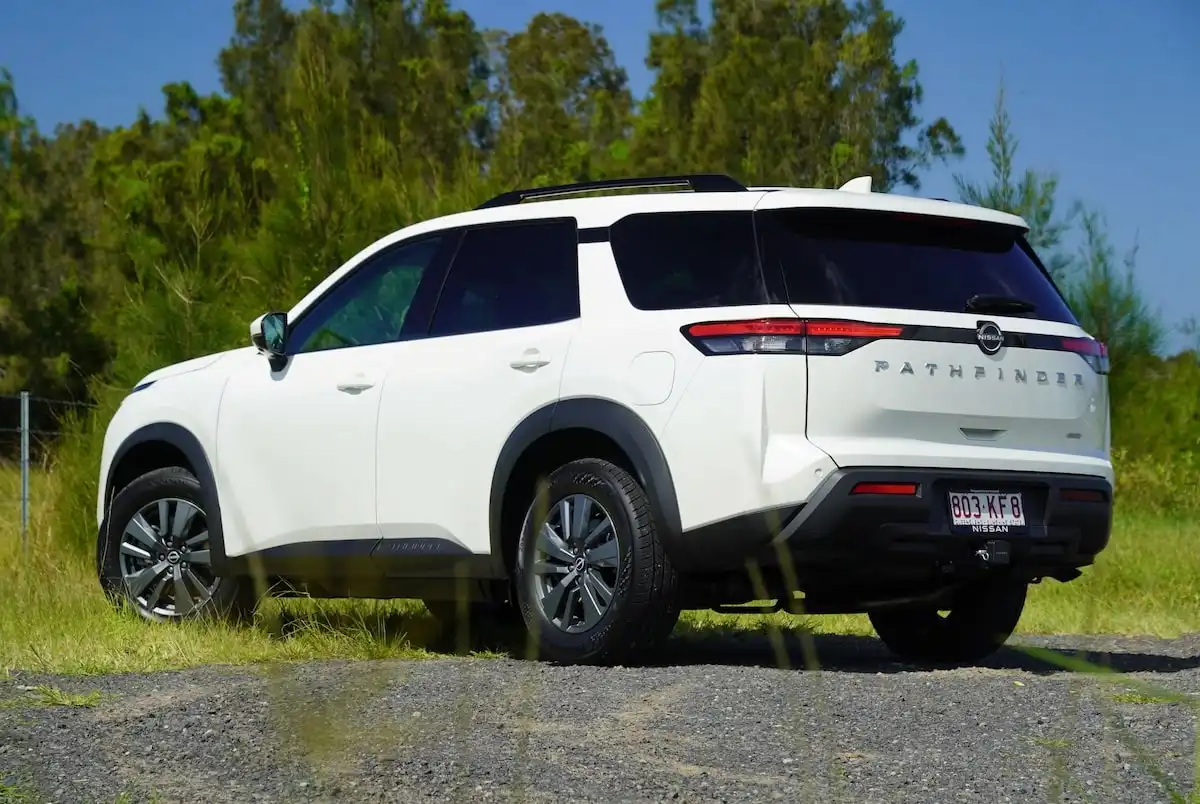
Five Nissan Pathfinder Specs You Need to Know
-
Ten-year/300,000-kilometre warranty (when serviced on time, within network)
-
3.5-litre V6 petrol paired with nine-speed automatic transmission
-
Eight-seat layout with 3 x ISOFIX anchor points, 4 x top tether mounts
-
205 - 782L boot space
-
10.5L/100km claimed fuel economy figures
Get in touch with one of our Car Buying Specialists today.
Request a quote